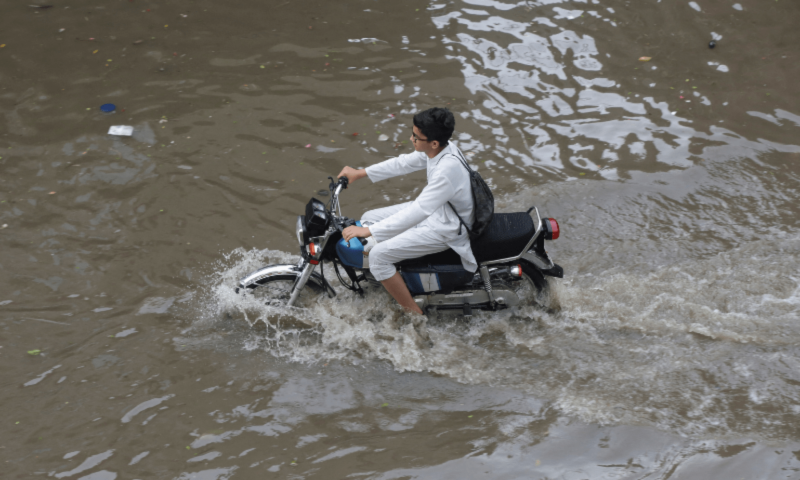An NDMA report reveals that a total of 234 people, including 112 children, have died across the country since June 26.
With the onset of the monsoon season in Pakistan, which typically lasts from late June to September, different parts of the country are witnessing heavy rainfall and a heightened risk of extreme weather events like flash floods and landslides, especially in its northern and western regions.
According to the Global Climate Risk Index, Pakistan ranks as the fifth most vulnerable country to climate change. Devastating flash floods in 2022 killed at least 1,700 people, affected more than 33 million, swept away swathes of agricultural land, and caused losses worth $30 billion, according to governmental estimates.
This year, floods and rain-related incidents like roof collapses and electrocution have killed at least 234 people, including 112 children, since June 26, according to a report by the National Disaster Management Authority (NDMA).
What are flash floods?
According to the World Meteorological Organisation (WMO), flash flood is “a flood of short duration with a relatively high peak discharge in which the time interval between the observable causative event and the flood is less than four to six hours.”
It is generally characterised by raging torrents after heavy rains, a dam or levee failure or a sudden release of water in a previously stopped passage that rips through riverbeds, urban streets, or mountain canyons, sweeping away everything in its path.
They differ from riverine floods in terms of their rapid onset and decline, high intensity, and unpredictability as well as their usually more localised impact in hilly and mountainous areas rather than the plains.
The Pakistan Meteorological Department (PMD) has previously highlighted the danger to local and seasonal streams in areas like Murree, Galiyat, Mansehra, Kohistan, Dir, Swat, Shangla, Nowshera, Swabi, Islamabad, Rawalpindi, Dera Ghazi Khan, northeastern Punjab, and Kashmir.
Besides natural causes, a number of anthropogenic (deriving from human activity) factors contribute to either creating the conditions that favour the development of flash floods or increase the associated risk, such as settlements on flood plains, urbanisation, deforestation, and failure to maintain or manage drainage systems.
What are landslides?
A landslide, on the other hand, is defined as the movement of a mass of rock, debris, or earth down a slope. The term encompasses five modes of slope movement: falls, topples, slides, spreads, and flows.
Landslides usually have multiple causes. Slope movement occurs when forces acting down-slope (mainly due to gravity) exceed the strength of the earth materials that compose the slope.
Causes include factors that increase the effects of down-slope forces and factors that contribute to low or reduced strength.
What to do during a flash flood or landslide
According to the NDMA, communities and individuals can take several preventive measures to reduce the impact of flash floods as well as landslides. These include:
- Stay informed about weather forecasts and flood alerts.
- Evacuate to higher ground immediately if advised by authorities.
- Assess property damage and prioritise safety during cleanup efforts.
- Prepare an emergency kit with essentials like food, water, medications, and documents.
- Avoid walking or driving through floodwaters; they may be deeper or faster-flowing than they appear.
- Seek medical attention for injuries or illnesses related to the flood.
- Follow instructions from emergency services and local authorities.
- Organise community cleanup efforts to remove debris and restore infrastructure.
- Establish and maintain early warning systems to alert residents of potential floods.
- Engage volunteers for emergency response and build shelters for displaced residents.
- Provide support services such as counselling and relief assistance to affected individuals and families.
- Conduct drills and exercises to practice evacuation procedures.
- Coordinate with neighbouring communities and authorities for flood conditions, mutual aid and support.
- Implement long-term flood mitigation measures like improving drainage systems and resilience.
Header Image: A person rides a motorbike through a flooded street after a downpour in Lahore, Pakistan on July 9, 2025. — Reuters
